
Turkderm-Turkish Archives of Dermatology and Venerology
Scope & Guideline
Unlocking Insights in Skin Health and Disease
Introduction
Aims and Scopes
- Dermatological Diseases and Treatments:
The journal publishes research on various skin conditions including but not limited to psoriasis, dermatitis, melanoma, and other skin cancers, emphasizing innovative therapies and treatment methodologies. - Clinical Case Reports:
A significant portion of the journal is dedicated to case reports that provide insights into rare or complex dermatological conditions, showcasing unique patient presentations and treatment outcomes. - Socio-Dermatology:
The journal explores the intersection of dermatology with social factors, including the impact of cultural beliefs and practices on skin health, and the psychosocial aspects of skin diseases. - Emerging Technologies in Dermatology:
The journal includes studies on the use of novel technologies and treatment modalities such as laser therapies, biological agents, and teledermatology, reflecting the evolving landscape of dermatological care. - Epidemiological Studies:
Research on the prevalence, risk factors, and outcomes of dermatological diseases in various populations, contributing to a better understanding of public health aspects related to skin conditions.
Trending and Emerging
- Impact of COVID-19 on Dermatology:
There is a growing body of research examining how the COVID-19 pandemic has affected dermatological practices, patient care, and disease management, highlighting the relevance of infectious diseases in dermatology. - Teledermatology and Digital Health:
With the rise of telemedicine, studies focusing on teledermatology, including the effectiveness of remote consultations and digital health tools, are emerging as significant themes. - Psychodermatology:
Research exploring the psychological aspects of skin diseases, including the impact of skin conditions on mental health and quality of life, is gaining traction, reflecting a holistic approach to dermatological care. - Personalized Medicine in Dermatology:
There is an increasing focus on personalized treatment approaches based on genetic and molecular profiling, particularly in conditions like psoriasis and melanoma, indicating a trend towards tailored therapies. - Cosmetic Dermatology:
The journal is publishing more studies related to cosmetic procedures and their outcomes, reflecting the growing interest in aesthetic dermatology among practitioners and patients.
Declining or Waning
- Traditional Herbal Remedies:
Research focusing on traditional or herbal treatments for skin conditions has decreased, suggesting a shift towards evidence-based, scientifically validated therapies. - Basic Science Research:
There has been a noticeable decline in studies purely focused on the basic science of dermatology, such as histological studies or laboratory-based research, as the journal increasingly emphasizes clinical applications. - Older Treatment Modalities:
Interest in older pharmacological treatments and their comparative effectiveness has waned, possibly due to the introduction of newer therapies that demonstrate better efficacy and safety.
Similar Journals

Dermatologie
Advancing the Science of Skin HealthDermatologie, published by SPRINGER HEIDELBERG, is a prominent journal dedicated to the advancing field of dermatology. With its ISSN 2731-7005 and E-ISSN 2731-7013, this journal has established itself as a valuable resource for researchers, professionals, and students alike. Originating in Germany, the journal focuses on disseminating innovative research from 2022 to 2024, contributing significantly to the understanding of skin health and disease management. Despite its current ranking within the Q3 category in dermatology and a Scopus rank of #88/142, it provides critical insights and advances in clinical practice, epidemiology, and therapeutic modalities. With an emphasis on open discourse, it seeks to foster collaboration among healthcare professionals and researchers, thereby enhancing the quality and accessibility of dermatological research. Engage with Dermatologie to stay at the forefront of the latest advancements in skin-related health issues.

Dermatologie in Beruf und Umwelt
Connecting Clinical Insights with Environmental DermatologyDermatologie in Beruf und Umwelt is a reputable journal published by DUSTRI-VERLAG DR KARL FEISTLE, focusing on the intersection of dermatology, occupational health, and environmental influences on skin health. With its ISSN 1438-776X and E-ISSN 1616-7090, this journal serves as a crucial platform for disseminating research findings and clinical practices that address the dermatological concerns arising in diverse occupational settings. Although the journal's coverage in Scopus concluded in 2021, it remains significant within the medical community, evidenced by its rankings within the 29th percentile in Medicine - Dermatology and 20th percentile in Medicine - Public Health, Environmental and Occupational Health. While it follows a traditional access model, its commitment to enhancing knowledge and promoting best practices in skin health makes it an essential resource for researchers, clinicians, and public health professionals eager to explore the complex relationship between work environments and dermatological outcomes.

Turk Dermatoloji Dergisi-Turkish Journal of Dermatology
Advancing dermatological knowledge, one publication at a time.Turk Dermatoloji Dergisi-Turkish Journal of Dermatology, published by Wolters Kluwer Medknow Publications, is a prominent platform dedicated to advancing the field of dermatology in Turkey and beyond. With an ISSN of 1307-7635 and an E-ISSN of 1308-5255, this journal plays a vital role in disseminating contemporary research and clinical advancements within the domain. While it is positioned in the Q4 quartile of dermatology journals, its contributions are essential for academics, medical practitioners, and students averse to the latest trends and breakthroughs in skin health. The journal assures accessibility to a broad audience, fostering knowledge exchange, collaboration, and innovation. Given its unique perspective rooted in Turkish dermatological practices, the Turkish Journal of Dermatology serves as a significant resource for enhancing professional competence and driving forward the science of dermatology through its vivid discussions and case studies. For researchers seeking a dedicated venue to publish their work or for professionals eager to stay informed, this journal is an indispensable resource in the ever-evolving landscape of dermatology.
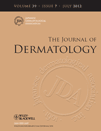
JOURNAL OF DERMATOLOGY
Innovating skin care practices with cutting-edge findings.The Journal of Dermatology, published by Wiley, is a premier academic journal dedicated to advancing the field of dermatology, with its esteemed reputation reflected in its Q1 ranking in Dermatology and a remarkable Q2 ranking in Miscellaneous Medicine as of 2023. Since its inception in 1974, the journal has become a vital resource for researchers, clinicians, and students alike, covering pioneering studies and cutting-edge advancements in skin health and disease. With a Scopus rank of #32 out of 142 in the Dermatology category, placing it in the 77th percentile, the journal underscores its commitment to fostering knowledge and innovation within the dermatological community. Although the journal operates under a subscription model, it remains an essential platform for disseminating impactful research that shapes clinical practice and enhances patient care. For anyone invested in dermatological sciences, Journal of Dermatology serves as a key publication where critical insights and developments are regularly showcased.
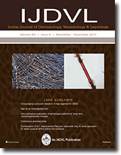
Indian Journal of Dermatology Venereology & Leprology
Elevating Standards in Dermatological and Venereological ResearchThe Indian Journal of Dermatology Venereology & Leprology (IJDL) is a premier open-access journal dedicated to the fields of dermatology, venereology, and leprology, published by SCIENTIFIC SCHOLAR LLC since 2004. With a rich historical background dating back to 1976, the journal has established itself as a reputable source for high-quality research and clinical advancements in these disciplines. The IJDL is recognized for its academic rigor, boasting a 2023 category quartile ranking of Q2 in Dermatology and Q3 in Infectious Diseases, indicating its significant contribution to these fields. With an accessible online platform, researchers, practitioners, and students alike can readily explore the latest studies, case reports, and reviews that address key issues affecting public health, particularly in India and beyond. The journal serves not only as a repository of valuable knowledge but also as a vital forum for the exchange of ideas, fostering collaboration and innovation among professionals dedicated to enhancing skin health and combating infectious diseases.

Journal of Cutaneous Immunology and Allergy
Advancing knowledge at the intersection of skin, immunity, and allergy.The Journal of Cutaneous Immunology and Allergy, published by FRONTIERS MEDIA SA in Switzerland, is an esteemed Open Access platform dedicated to advancing research in the intersecting fields of dermatology, immunology, and allergy. Since its inception in 2018, this journal has provided a vital resource for the dissemination of innovative research findings and critical reviews, enhancing our understanding of cutaneous conditions related to immune responses. Although currently classified in the Q4 quartile in both Dermatology and Immunology & Allergy categories as of 2023, the journal continues to strive for recognition within the scientific community, encouraging collaboration and knowledge sharing among researchers, clinicians, and experts. The journal boasts an E-ISSN of 2574-4593 and is committed to making high-quality research freely accessible to all, thus fostering greater insights into the complexities of skin-related immune disorders. Join us in this journey to explore the forefront of cutaneous research and contribute to the evolving dialogue in this dynamic field.

JOURNAL OF THE AMERICAN ACADEMY OF DERMATOLOGY
Unveiling the latest in dermatological science and therapy.JOURNAL OF THE AMERICAN ACADEMY OF DERMATOLOGY, published by Mosby-Elsevier, stands at the forefront of dermatological research and education. With an impressive impact factor and categorized as Q1 in Dermatology, this journal has established itself as a pivotal resource for healthcare professionals and researchers in the field. Since its inception in 1979, it has provided a platform for high-quality peer-reviewed articles, contributing significantly to advancements in dermatological science and practice through 2024. The journal commands an honorable position, ranking #8 out of 142 in the Scopus database's medicine dermatology category, placing it in the 94th percentile among its peers. Readers can access a wealth of cutting-edge studies, case reports, and reviews that address a broad spectrum of topics, from clinical dermatology to emerging therapies. In addition, the journal's commitment to excellence ensures it remains an essential tool for students, clinicians, and researchers dedicated to improving skin health and furthering knowledge in dermatology.
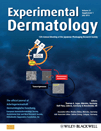
EXPERIMENTAL DERMATOLOGY
Transforming Knowledge into Therapeutic StrategiesEXPERIMENTAL DERMATOLOGY, published by WILEY, is a leading journal in the fields of Biochemistry and Dermatology, with impressive rankings including Q1 status in both categories as of 2023. With its ISSN 0906-6705 and E-ISSN 1600-0625, the journal offers a reputable platform for disseminating cutting-edge research and insights into skin biology and related health issues. As a pivotal resource for professionals, researchers, and students alike, EXPERIMENTAL DERMATOLOGY includes a broad scope of topics, fostering a deeper understanding of dermatological conditions and enhancing new therapeutic strategies. The journal’s distinguished performance is highlighted by its Scopus rankings, which place it at the 91st percentile in Medicine-Dermatology and the 65th in Biochemistry. While not an open-access publication, the journal remains committed to ensuring the accessibility of crucial developments within the dermatological community worldwide, facilitating the advancement of both clinical practice and academic inquiry.
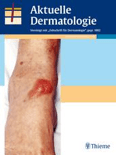
AKTUELLE DERMATOLOGIE
Fostering Collaboration in Dermatological Research and PracticeAKTUELLE DERMATOLOGIE is a distinguished journal in the field of Dermatology, published by GEORG THIEME VERLAG KG in Germany. With a commitment to advancing knowledge and practice in dermatological science, the journal has regularly featured research articles, reviews, and case studies since its inception in 1975 and continues to publish contributions through 2024. Despite being categorized in the lower quartile (Q4) of dermatology journals and holding a Scopus rank of #127 out of 142, it plays a pivotal role in disseminating valuable insights that support ongoing education and research in the discipline. The journal provides an essential platform for both seasoned professionals and budding researchers to share their findings, explore emerging trends, and discuss clinical practices, all while serving the needs of an evolving medical landscape. Access to its content may be restricted, but the journal remains a crucial reference for those invested in the future of dermatological research and patient care.
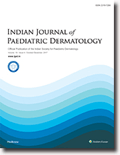
Indian Journal of Paediatric Dermatology
Leading the way in children's dermatological research.Indian Journal of Paediatric Dermatology (ISSN: 2319-7250; E-ISSN: 2319-7269), published by Wolters Kluwer Medknow Publications, stands as a pivotal resource in the specialized field of paediatric dermatology. As a peer-reviewed open access journal since 2013, it aims to disseminate cutting-edge research, clinical practices, and innovative developments that cater to the specific dermatological needs of children. The journal provides an essential forum for collaboration among researchers, clinicians, and students, facilitating the sharing of knowledge on a wide array of topics, including skin conditions unique to paediatric populations, treatment methodologies, and advancements in dermatological care. With a commitment to enhancing the understanding and treatment of paediatric skin diseases, this journal plays a critical role in shaping best practices and informing future research directions in a rapidly evolving field.